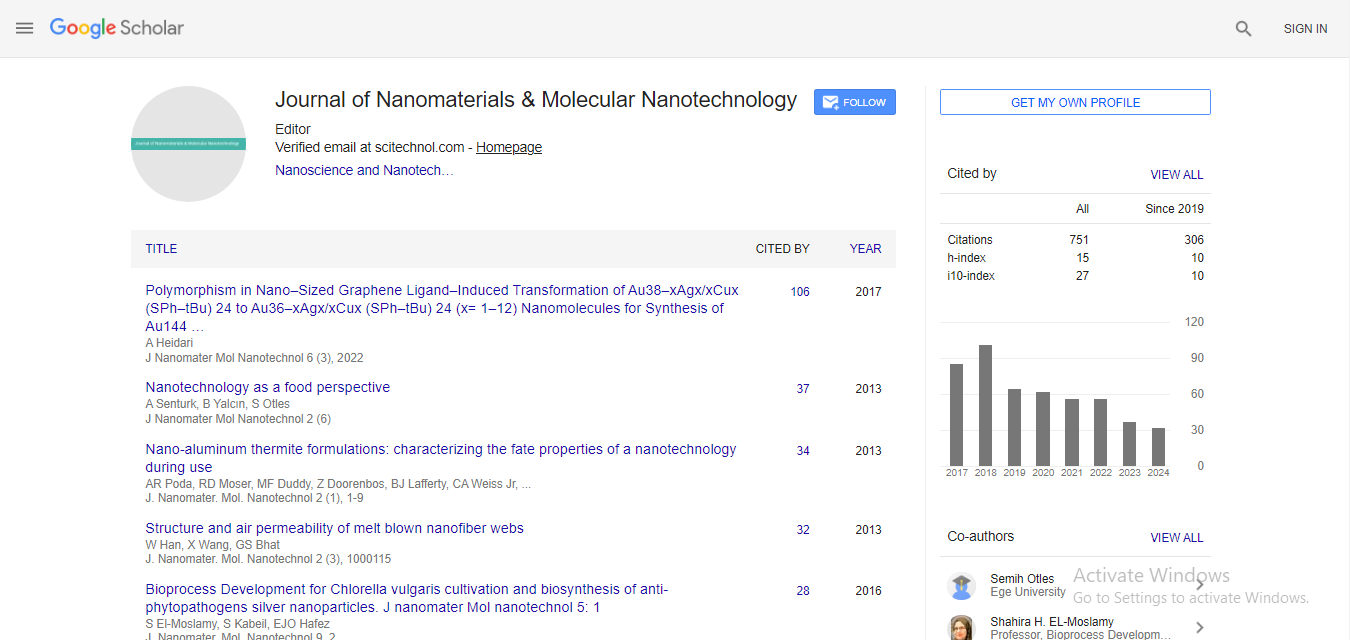Mechanical properties of fluorine elastomers dispersed with carbon nanotubes and graphene oxide nanoribbons
Masatoshi Shioya, Kenta Kubo and Tsuyoshi Noguchi
Tokyo Institute of Technology, Japan
Daikin Industries Ltd, Japan
: J Nanomater Mol Nanotechnol
Abstract
Tetrafluoroethylene-perfluorovinylether type elastomers cross-linked with triazine rings possess excellent thermal resistance (heatproof temperature exceeding 300ºC) and chemical resistance, and are used for the O-rings in the chemical plants and the semiconductor industry, for example. However, their drawbacks are rather low mechanical strength and the charging property, and various attempts have been made for improving these properties by dispersing carbon-based fillers. In this study, carbon nanotubes (CNT) and graphene oxide nanoribbons (GONR) have been dispersed in the elastomer, and their mechanical properties have been investigated. The matrix elastomer used was the tetrafluoroethylene-perfluorovinylether type elastomer (FFKM, Daikin Industries, Ltd.). The fillers used were the CNT with a length of 10–20 μm and a diameter of 150 nm (VGCF-H, Showa Denko K. K.) and GONR produced by unzipping these CNT. The tensile modulus, tensile strength, tensile strain at fracture and wear rate of neat FFKM were 1.1 MPa, 3.3 MPa, 2.1 and 7.6 × 10-11 Pa-1. The wear rate is the volume lost by wear divided by the normal load applied on the wear surface and the sliding distance, which decreases with increasing wear resistance. Figure 1 shows that these properties were effectively improved by dispersing fillers where the GONR showed the higher improvement than the CNT. Figure 2 shows the small-angle x-ray scattering (SAXS) patterns of these elastomers during tensile deformation, which were caused by the nanovoids produced during sample preparation. Figure 2 shows that the nanovoids were elongated in the stretching direction during tensile deformation. The degree of elongation was smaller for the elastomers with the GONR than those with the CNT, which indicated that the filler-matrix interaction is the stronger for the former due to the larger specific surface area and the larger amount of surface functional groups. Recent Publications 1. Shioya M, Kuroyanagi Y, Ryu M and Morikawa J (2018) Analysis of the adhesive properties of carbon nanotube- and graphene oxide nanoribbon-dispersed aliphatic epoxy resins based on the Maxwell model. International Journal of Adhesion and Adhesives 84:27-36. 2. Sugimoto Y, Shioya M and Kageyama K (2016) Determination of intrinsic strength of carbon fibers. Carbon 100:208-213. 3. Takamura T, Nozawa K, Sugimoto Y and Shioya M (2014) Extraordinarily large swelling energy of iodine-treated poly(vinyl alcohol) demonstrated by jump of a film. Journal of Polymer Science Part B Polymer Physics 52:1357–1365. 4. Shioya M, Inoue H and Sugimoto Y (2013) Reduction in tensile strength of polyacrylonitrile-based carbon fibers in liquids and its application to defect analysis. Carbon 65:63-70.
Biography
Masatoshi Shioya has his expertise in the analysis of material structure using x-ray diffraction and scattering and the theoretical and experimental investigations on the mechanical properties of carbon fibers, their composites and the composites dispersed with various fillers. He has proposed a method for determining the tensile strength of a fiber in a composite without taking it out of the composite, a method for evaluating the tensile strength of carbon fibers which will be achieved after removing the initial cracks and a method to know the location of the initial crack in the fiber strength from the tensile strength reduction of carbon fibers in liquids.
E-mail: shioya.m.aa@m.titech.ac.jp
 Spanish
Spanish  Chinese
Chinese  Russian
Russian  German
German  French
French  Japanese
Japanese  Portuguese
Portuguese  Hindi
Hindi 



